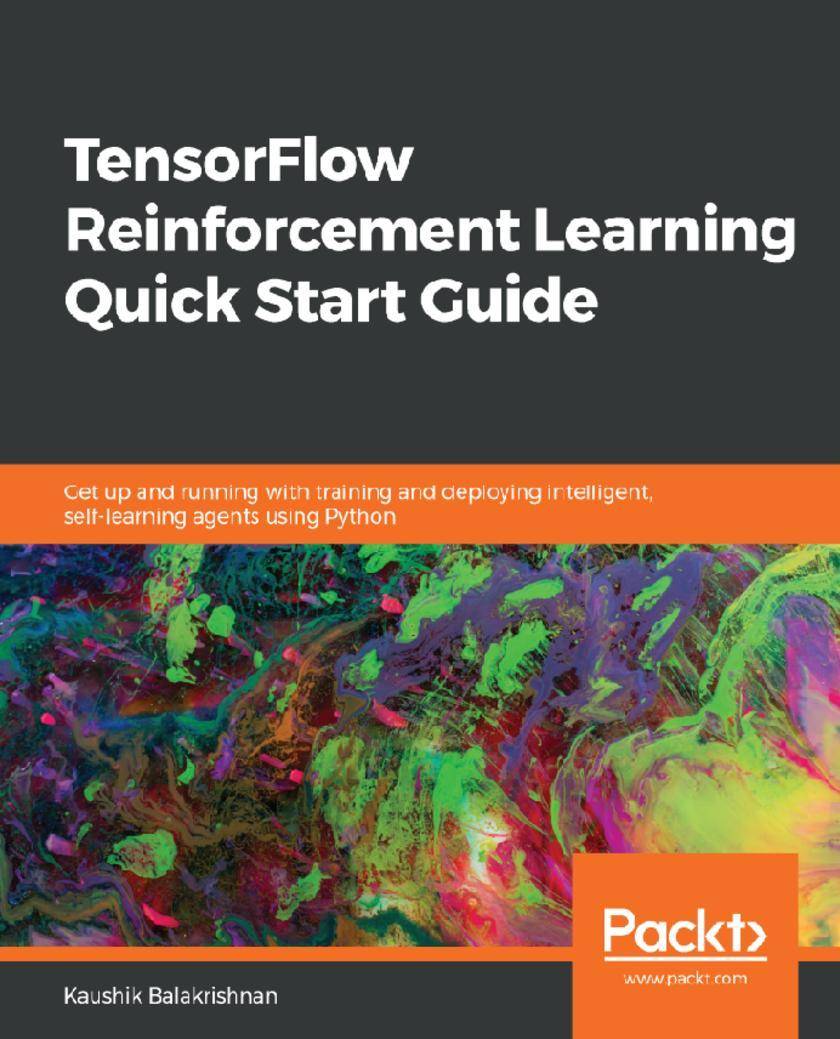
TensorFlow Reinforcement Learning Quick Start Guide
¥45.77
Leverage the power of Tensorflow to Create powerful software agents that can self-learn to perform real-world tasks Key Features * Explore efficient Reinforcement Learning algorithms and code them using TensorFlow and Python * Train Reinforcement Learning agents for problems, ranging from computer games to autonomous driving. * Formulate and devise selective algorithms and techniques in your applications in no time. Book Description Advances in reinforcement learning algorithms have made it possible to use them for optimal control in several different industrial applications. With this book, you will apply Reinforcement Learning to a range of problems, from computer games to autonomous driving. The book starts by introducing you to essential Reinforcement Learning concepts such as agents, environments, rewards, and advantage functions. You will also master the distinctions between on-policy and off-policy algorithms, as well as model-free and model-based algorithms. You will also learn about several Reinforcement Learning algorithms, such as SARSA, Deep Q-Networks (DQN), Deep Deterministic Policy Gradients (DDPG), Asynchronous Advantage Actor-Critic (A3C), Trust Region Policy Optimization (TRPO), and Proximal Policy Optimization (PPO). The book will also show you how to code these algorithms in TensorFlow and Python and apply them to solve computer games from OpenAI Gym. Finally, you will also learn how to train a car to drive autonomously in the Torcs racing car simulator. By the end of the book, you will be able to design, build, train, and evaluate feed-forward neural networks and convolutional neural networks. You will also have mastered coding state-of-the-art algorithms and also training agents for various control problems. What you will learn * Understand the theory and concepts behind modern Reinforcement Learning algorithms * Code state-of-the-art Reinforcement Learning algorithms with discrete or continuous actions * Develop Reinforcement Learning algorithms and apply them to training agents to play computer games * Explore DQN, DDQN, and Dueling architectures to play Atari's Breakout using TensorFlow * Use A3C to play CartPole and LunarLander * Train an agent to drive a car autonomously in a simulator Who this book is for Data scientists and AI developers who wish to quickly get started with training effective reinforcement learning models in TensorFlow will find this book very useful. Prior knowledge of machine learning and deep learning concepts (as well as exposure to Python programming) will be useful.
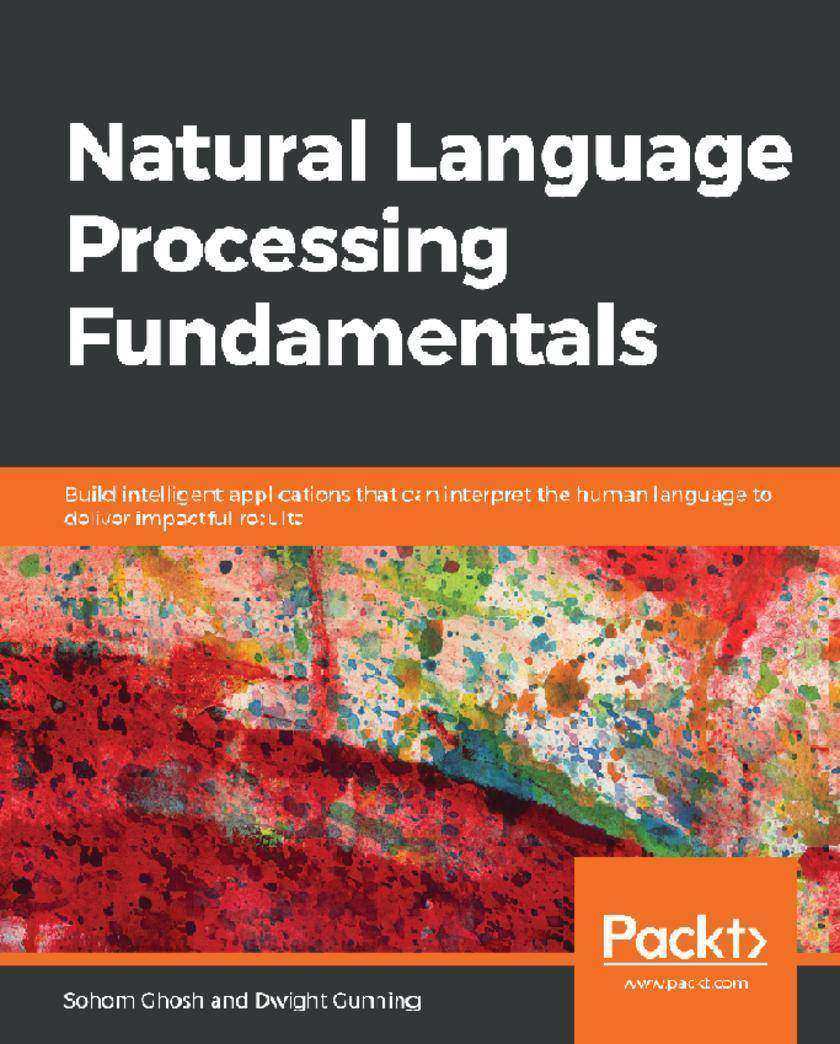
Natural Language Processing Fundamentals
¥73.02
Use Python and NLTK (Natural Language Toolkit) to build out your own text classifiers and solve common NLP problems. Key Features * Assimilate key NLP concepts and terminologies * Explore popular NLP tools and techniques * Gain practical experience using NLP in application code Book Description If NLP hasn't been your forte, Natural Language Processing Fundamentals will make sure you set off to a steady start. This comprehensive guide will show you how to effectively use Python libraries and NLP concepts to solve various problems. You'll be introduced to natural language processing and its applications through examples and exercises. This will be followed by an introduction to the initial stages of solving a problem, which includes problem definition, getting text data, and preparing it for modeling. With exposure to concepts like advanced natural language processing algorithms and visualization techniques, you'll learn how to create applications that can extract information from unstructured data and present it as impactful visuals. Although you will continue to learn NLP-based techniques, the focus will gradually shift to developing useful applications. In these sections, you'll understand how to apply NLP techniques to answer questions as can be used in chatbots. By the end of this book, you'll be able to accomplish a varied range of assignments ranging from identifying the most suitable type of NLP task for solving a problem to using a tool like spacy or gensim for performing sentiment analysis. The book will easily equip you with the knowledge you need to build applications that interpret human language. What you will learn * Obtain, verify, and clean data before transforming it into a correct format for use * Perform data analysis and machine learning tasks using Python * Understand the basics of computational linguistics * Build models for general natural language processing tasks * Evaluate the performance of a model with the right metrics * Visualize, quantify, and perform exploratory analysis from any text data Who this book is for Natural Language Processing Fundamentals is designed for novice and mid-level data scientists and machine learning developers who want to gather and analyze text data to build an NLP-powered product. It'll help you to have prior experience of coding in Python using data types, writing functions, and importing libraries. Some experience with linguistics and probability is useful but not necessary.
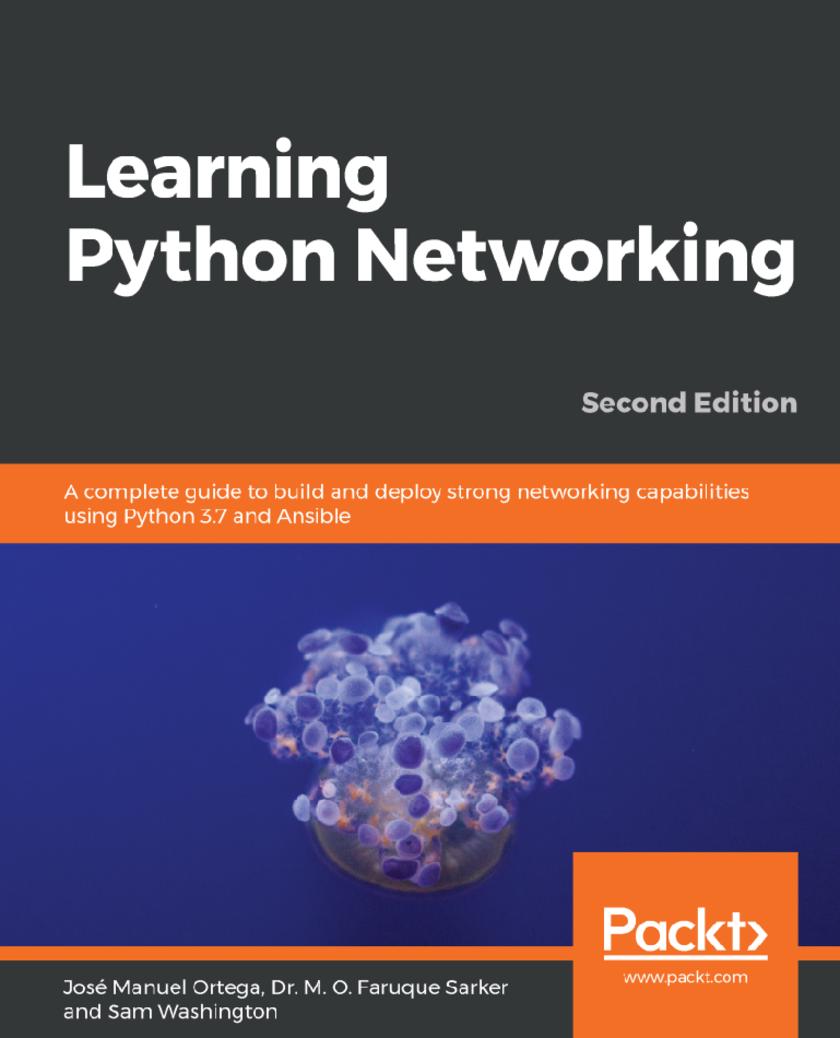
Learning Python Networking
¥90.46
Achieve improved network programmability and automation by leveraging powerful network programming concepts, algorithms, and tools Key Features * Deal with remote network servers using SSH, FTP, SNMP and LDAP protocols. * Design multi threaded and event-driven architectures for asynchronous servers programming. * Leverage your Python programming skills to build powerful network applications Book Description Network programming has always been a demanding task. With full-featured and well-documented libraries all the way up the stack, Python makes network programming the enjoyable experience it should be. Starting with a walk through of today's major networking protocols, through this book, you'll learn how to employ Python for network programming, how to request and retrieve web resources, and how to extract data in major formats over the web. You will utilize Python for emailing using different protocols, and you'll interact with remote systems and IP and DNS networking. You will cover the connection of networking devices and configuration using Python 3.7, along with cloud-based network management tasks using Python. As the book progresses, socket programming will be covered, followed by how to design servers, and the pros and cons of multithreaded and event-driven architectures. You'll develop practical clientside applications, including web API clients, email clients, SSH, and FTP. These applications will also be implemented through existing web application frameworks. What you will learn * Execute Python modules on networking tools * Automate tasks regarding the analysis and extraction of information from a network * Get to grips with asynchronous programming modules available in Python * Get to grips with IP address manipulation modules using Python programming * Understand the main frameworks available in Python that are focused on web application * Manipulate IP addresses and perform CIDR calculations Who this book is for If you're a Python developer or a system administrator with Python experience and you're looking to take your first steps in network programming, then this book is for you. If you're a network engineer or a network professional aiming to be more productive and efficient in networking programmability and automation then this book would serve as a useful resource. Basic knowledge of Python is assumed.
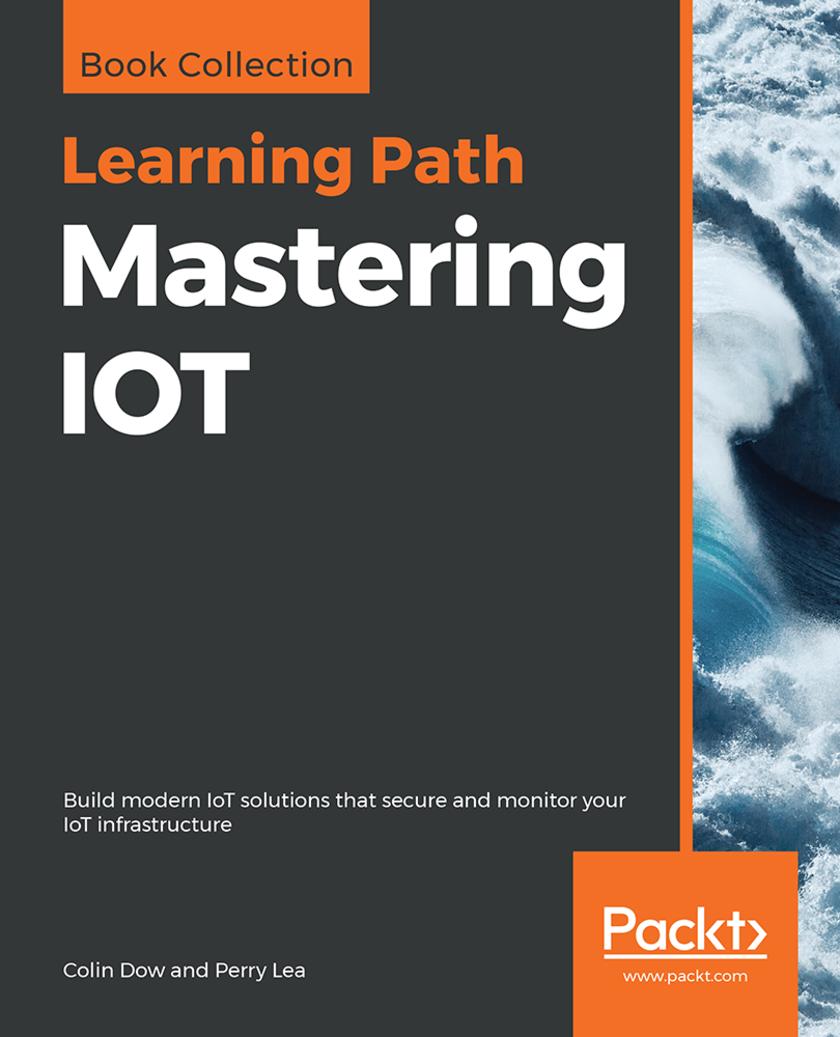
Mastering IOT
¥88.28
Leverage the full potential of IoT with the combination of Raspberry Pi 3 and Python and architect a complete IoT system that is the best fit for your organization Key Features * Build complex Python-based applications with IoT * Explore different concepts, technologies, and tradeoffs in the IoT architectural stack * Delve deep into each element of the IoT design—from sensors to the cloud Book Description The Internet of Things (IoT) is the fastest growing technology market. Industries are embracing IoT technologies to improve operational expenses, product life, and people's well-being. We’ll begin our journey with an introduction to Raspberry Pi and quickly jump right into Python programming. We’ll learn all concepts through multiple projects, and then reinforce our learnings by creating an IoT robot car. We’ll examine modern sensor systems and focus on what their power and functionality can bring to our system. We’ll also gain insight into cloud and fog architectures, including the OpenFog standards. The Learning Path will conclude by discussing three forms of prevalent attacks and ways to improve the security of our IoT infrastructure. By the end of this Learning Path, we will have traversed the entire spectrum of technologies needed to build a successful IoT system, and will have the confidence to build, secure, and monitor our IoT infrastructure. This Learning Path includes content from the following Packt products: * Internet of Things Programming Projects by Colin Dow * Internet of Things for Architects by Perry Lea What you will learn * Build a home security dashboard using an infrared motion detector * Receive data and display it with an actuator connected to the Raspberry Pi * Build an IoT robot car that is controlled via the Internet * Use IP-based communication to easily and quickly scale your system * Explore cloud protocols, such as Message Queue Telemetry Transport (MQTT) and CoAP * Secure communication with encryption forms, such as symmetric key Who this book is for This Learning Path is designed for developers, architects, and system designers who are interested in building exciting projects with Python by understanding the IoT ecosphere, various technologies, and tradeoffs. Technologists and technology managers who want to develop a broad view of IoT architecture, will also find this Learning Path useful. Prior programming knowledge of Python is a must.

Hands-On Motion Graphics with Adobe After Effects CC
¥79.56
Discover techniques to enhance your videos with complex animation Key Features * Design, animate, and sequence a complete motion graphics project * Work with compositions and pre-compositions to create animations speedily * Maximize your motion graphics and visual effects skills Book Description If you’re thinking seriously about making and publishing your videos with professional editing and animation, look no further! Adobe After Effects is a popular tool among video editors and YouTubers to enhance their videos and bring them to life by implementing visual effects and motion graphics. This book will take you right from the basics through to the advanced techniques in Adobe After Effects CC 2018. You will start by setting up your editing environment to learn and improve techniques to sharpen your video editing skills. Furthermore, you will work with basic and advanced special effects to create, modify, and optimize motion graphics in your videos. Lastly, you will not only learn how to create 2.5D animations, but also get to grips with using Cinema 4D Lite to build and animate complete 3D scenes. By the end of the book, you’ll have learned how to package a video efficiently with the help of the projects covered. What you will learn * Create a lower third project for a TV show with complex layers * Work with shape layer animation to create an animated lyrics video * Explore different tools to animate characters * Apply text animation to create a dynamic film-opening title * Use professional visual effects to create a VFX project * Model, light, and composite your 3D project in After Effects Who this book is for If you’re a student, professional, YouTuber, or anyone who is interested in video editing, animation, and motion graphics, this book is for you. You’ll also find this resource useful if you’re an Illustrator looking to put your creations in motion.
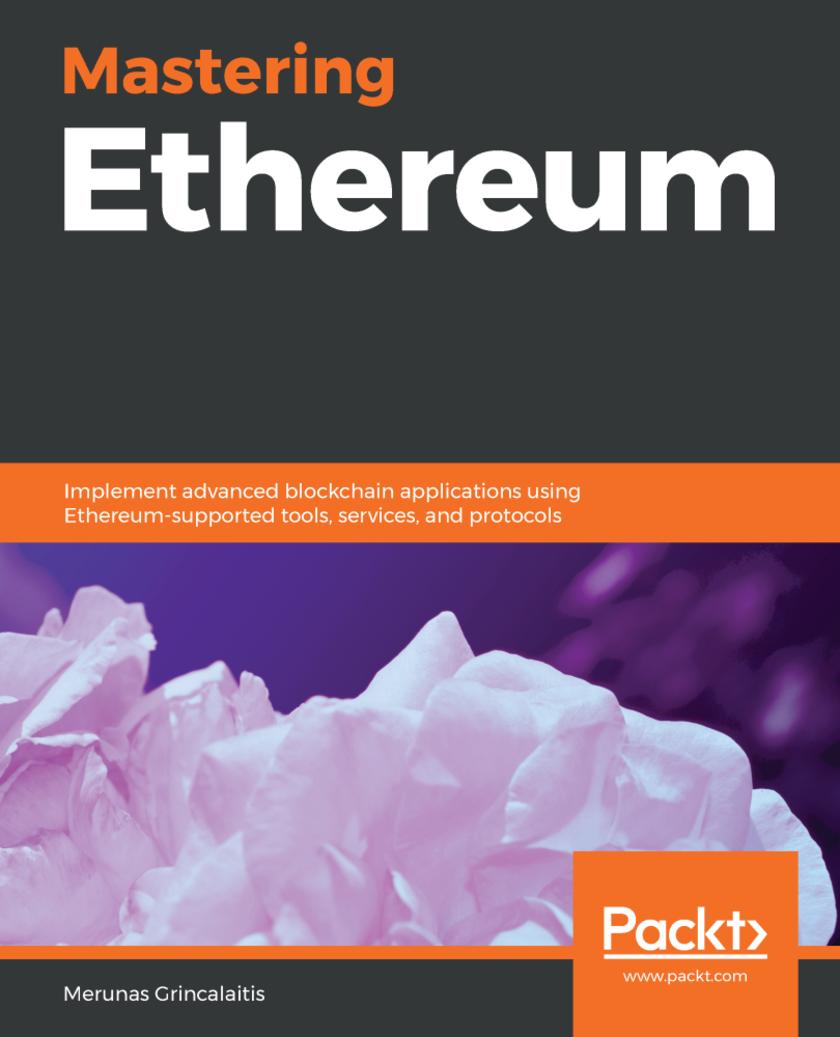
Mastering Ethereum
¥62.12
An expert guide to implementing fast, secure, and scalable decentralized applications that work with thousands of users in real time Key Features * Implement advanced features of the Ethereum network to build powerful decentralized applications * Build smart contracts on different domains using the programming techniques of Solidity and Vyper * Explore the architecture of Ethereum network to understand advanced use cases of blockchain development Book Description Ethereum is one of the commonly used platforms for building blockchain applications. It's a decentralized platform for applications that can run exactly as programmed without being affected by fraud, censorship, or third-party interference. This book will give you a deep understanding of how blockchain works so that you can discover the entire ecosystem, core components, and its implementations. You will get started by understanding how to configure and work with various Ethereum protocols for developing dApps. Next, you will learn to code and create powerful smart contracts that scale with Solidity and Vyper. You will then explore the building blocks of the dApps architecture, and gain insights on how to create your own dApp through a variety of real-world examples. The book will even guide you on how to deploy your dApps on multiple Ethereum instances with the required best practices and techniques. The next few chapters will delve into advanced topics such as, building advanced smart contracts and multi-page frontends using Ethereum blockchain. You will also focus on implementing machine learning techniques to build decentralized autonomous applications, in addition to covering several use cases across a variety of domains such as, social media and e-commerce. By the end of this book, you will have the expertise you need to build decentralized autonomous applications confidently. What you will learn * Apply scalability solutions on dApps with Plasma and state channels * Understand the important metrics of blockchain for analyzing and determining its state * Develop a decentralized web application using React.js and Node.js * Create oracles with Node.js to provide external data to smart contracts * Get to grips with using Etherscan and block explorers for various transactions * Explore web3.js, Solidity, and Vyper for dApps communication * Deploy apps with multiple Ethereum instances including TestRPC, private chain, test chain, and mainnet Who this book is for This book is for anyone who wants to build fast, highly secure, and transactional decentralized applications. If you are an Ethereum developer looking to perfect your existing skills in building powerful blockchain applications, then this book is for you. Basic knowledge of Ethereum and blockchain is necessary to understand the concepts covered in this book.
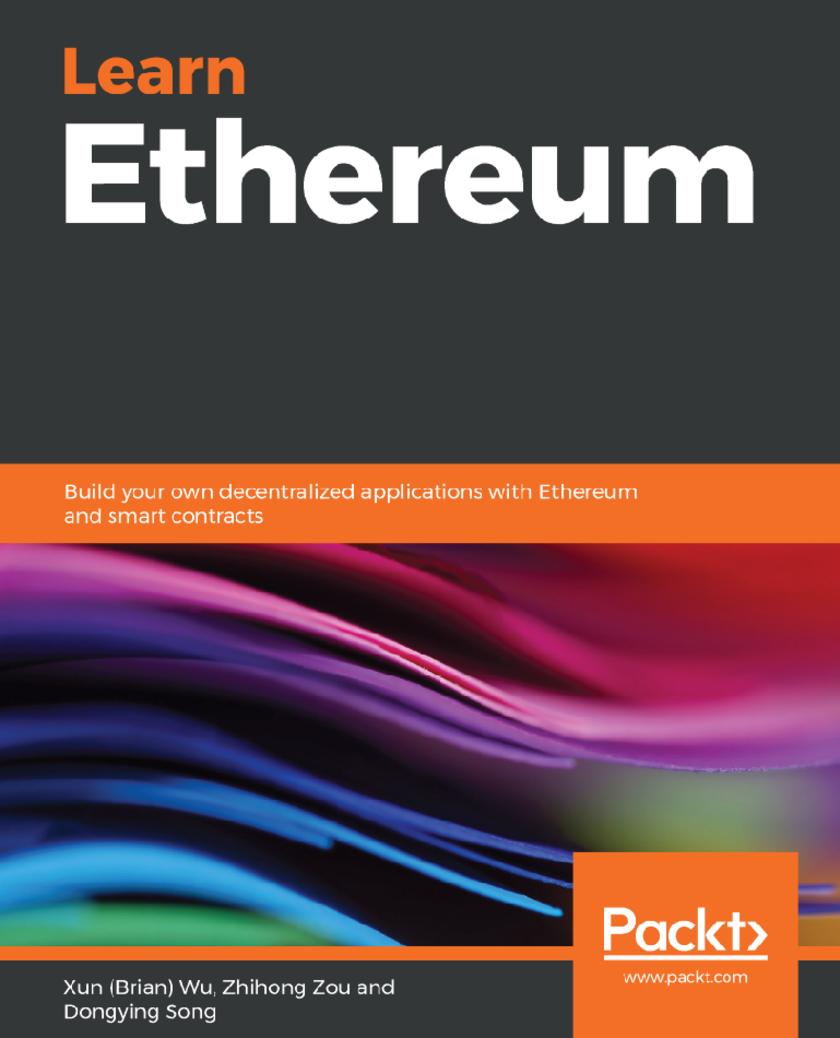
Learn Ethereum
¥63.21
Explore the blockchain-based decentralized platform and understand how Ethereum works with Dapps examples Key Features * Explore the Ethereum ecosystem and understand the latest research on the platform * Build decentralized apps (Dapps) using smart contracts and Ethereum with the help of practical examples * Learn to make your decentralized applications fast and highly secure Book Description Ethereum is a blockchain-based, decentralized computing platform that allows running smart contracts. This book provides a basic overview of how Ethereum works, its ecosystem, mining process, and the consensus mechanism. It also demonstrates a step-by-step approach for building decentralized applications. This book begins with the very basics of Blockchain technology. Then it dives deep into the Ethereum architecture, framework and tools in its ecosystem. It also provides you an overview of ongoing research on Ethereum, for example, Layer 1 and 2 scaling solution, Stablecoin, ICO/STO/IEO, etc. Next, it explains Solidity language in detail, and provides step-by-step instructions for designing, developing, testing, deploying, and monitoring decentralized applications. In addition, you’ll learn how to use Truffle, Remix, Infura, Metamask, and many other Ethereum technologies. It’ll also help you develop your own cryptocurrency by creating ERC20, and ERC721 smart contracts from scratch. Finally, we explain private blockchains, and you learn how to interact with smart contracts through wallets. What you will learn * Understand the concepts of blockchain and cryptocurrency * Master Ethereum development tools such as Truffle, Remix IDE and Infura * Delve into smart contract development * Develop DApps frontend using Node.js, React.js, and Web3js API * Learn Etherscan and other tools to secure and monitor smart contracts * Develop and debug smart contracts by working with Remix * Apply Truffle suite to compile, migrate, and unit test smart contracts * Explore smart contracts such as ERC20 token and decentralized digital market Who this book is for This book is for all developers and architects who want to explore Ethereum blockchain fundamentals and get started with building real-world decentralized applications. Knowledge of an object-oriented programming language such as JavaScript will be useful but not mandatory.
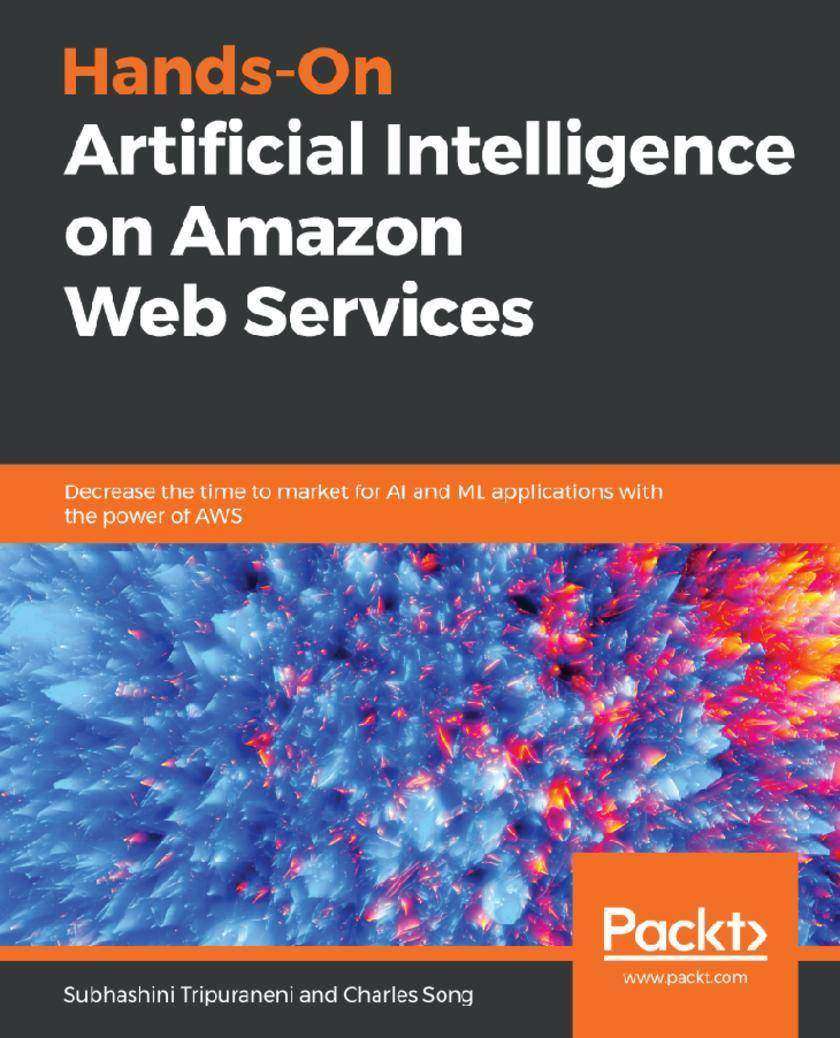
Hands-On Artificial Intelligence on Amazon Web Services
¥80.65
Perform cloud-based machine learning and deep learning using Amazon Web Services such as SageMaker, Lex, Comprehend, Translate, and Polly Key Features * Explore popular machine learning and deep learning services with their underlying algorithms * Discover readily available artificial intelligence(AI) APIs on AWS like Vision and Language Services * Design robust architectures to enable experimentation, extensibility, and maintainability of AI apps Book Description From data wrangling through to translating text, you can accomplish this and more with the artificial intelligence and machine learning services available on AWS. With this book, you’ll work through hands-on exercises and learn to use these services to solve real-world problems. You’ll even design, develop, monitor, and maintain machine and deep learning models on AWS. The book starts with an introduction to AI and its applications in different industries, along with an overview of AWS artificial intelligence and machine learning services. You’ll then get to grips with detecting and translating text with Amazon Rekognition and Amazon Translate. The book will assist you in performing speech-to-text with Amazon Transcribe and Amazon Polly. Later, you’ll discover the use of Amazon Comprehend for extracting information from text, and Amazon Lex for building voice chatbots. You will also understand the key capabilities of Amazon SageMaker such as wrangling big data, discovering topics in text collections, and classifying images. Finally, you’ll cover sales forecasting with deep learning and autoregression, before exploring the importance of a feedback loop in machine learning. By the end of this book, you will have the skills you need to implement AI in AWS through hands-on exercises that cover all aspects of the ML model life cycle. What you will learn * Gain useful insights into different machine and deep learning models * Build and deploy robust deep learning systems to production * Train machine and deep learning models with diverse infrastructure specifications * Scale AI apps without dealing with the complexity of managing the underlying infrastructure * Monitor and Manage AI experiments efficiently * Create AI apps using AWS pre-trained AI services Who this book is for This book is for data scientists, machine learning developers, deep learning researchers, and artificial intelligence enthusiasts who want to harness the power of AWS to implement powerful artificial intelligence solutions. A basic understanding of machine learning concepts is expected.
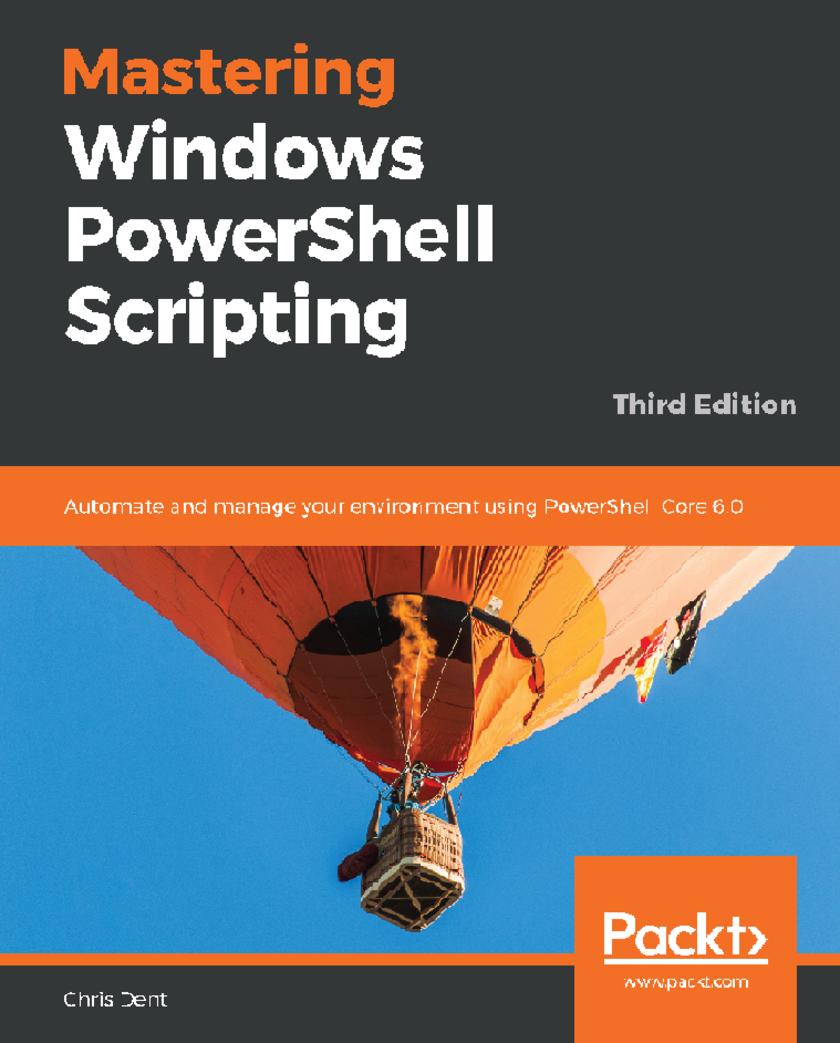
Mastering Windows PowerShell Scripting
¥81.74
Grasp advanced PowerShell Core 6.0 functionalities to automate your environment Key Features * Keep up with changes introduced in PowerShell Core 6.0 * Easily maintain appropriate compatibility with older versions * Automate complex tasks, manipulate data, and secure your environment with PowerShell Core 6.0 Book Description PowerShell scripts offer a handy way to automate various chores, however working effectively with these scripts can be a difficult task. This comprehensive guide starts with the fundamentals before moving on to advanced-level topics to help you become a PowerShell Core 6.0 expert. The first module, PowerShell Core 6.0 Fundamentals, begins with the new features of PowerShell Core 6.0, installing it on Linux, and working with parameters, objects and .NET classes from within PowerShell Core 6.0. As you make your way through the chapters, you'll see how to efficiently manage large amounts of data and interact with other services using PowerShell Core 6.0. You'll be able to make the most of PowerShell Core 6.0's powerful automation feature, where you will have different methods available to parse data and manipulate regular expressions and Windows Management Instrumentation (WMI). After having explored automation, you will enter the extending PowerShell Core 6.0 module, covering asynchronous processing and desired state configuration. In the last module, you will learn to extend PowerShell Core 6.0 using advanced scripts and filters, and also debug issues along with working on error handling techniques. By the end of this book, you will be an expert in scripting with PowerShell Core 6.0. What you will learn * Optimize code through the use of functions, switches, and looping structures * Work with objects and operators to test and manipulate data * Parse and manipulate different data types * Create scripts and functions using PowerShell * Use jobs, events, and popular public modules which assist with implementing multithreading * Write .NET classes with ease within the PowerShell * Create and implement regular expressions in PowerShell scripts * Make use of advanced techniques to define and restrict the behavior of parameters Who this book is for If you are a system administrator who wants to become an expert in controlling and automating your Windows environment, then Mastering Windows PowerShell Scripting is for you. It is also ideal for those new to the PowerShell language.
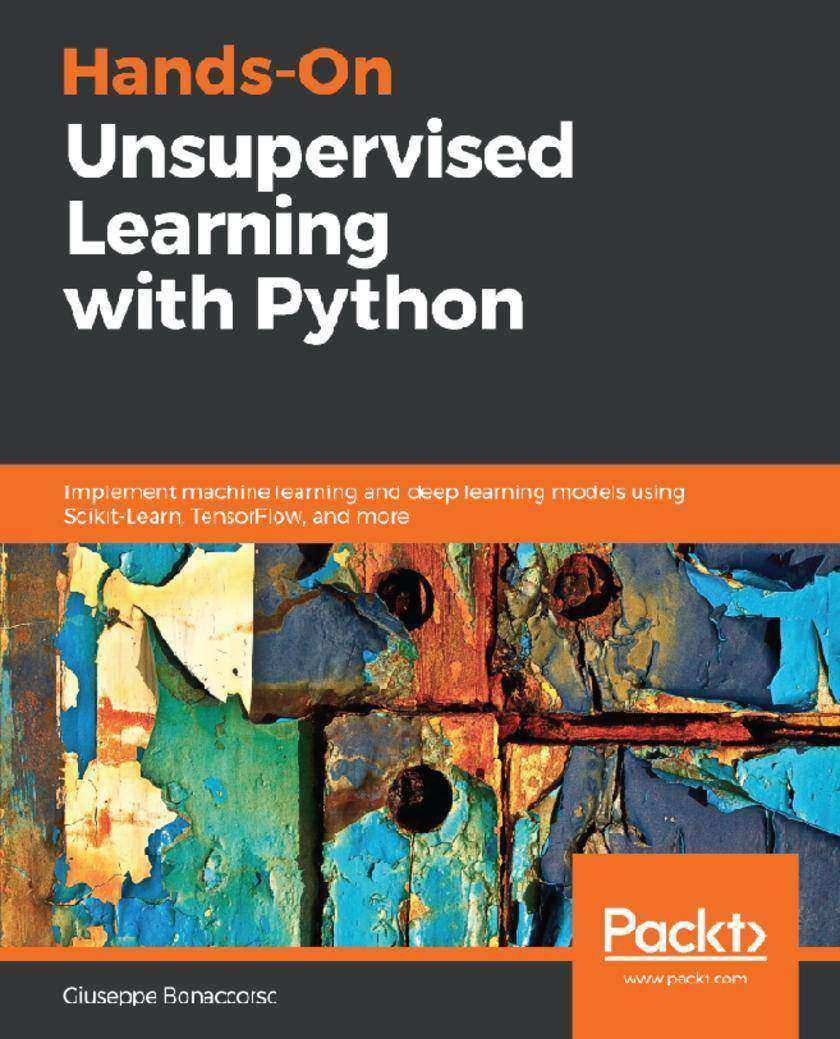
Hands-On Unsupervised Learning with Python
¥81.74
Discover the skill-sets required to implement various approaches to Machine Learning with Python Key Features * Explore unsupervised learning with clustering, autoencoders, restricted Boltzmann machines, and more * Build your own neural network models using modern Python libraries * Practical examples show you how to implement different machine learning and deep learning techniques Book Description Unsupervised learning is about making use of raw, untagged data and applying learning algorithms to it to help a machine predict its outcome. With this book, you will explore the concept of unsupervised learning to cluster large sets of data and analyze them repeatedly until the desired outcome is found using Python. This book starts with the key differences between supervised, unsupervised, and semi-supervised learning. You will be introduced to the best-used libraries and frameworks from the Python ecosystem and address unsupervised learning in both the machine learning and deep learning domains. You will explore various algorithms, techniques that are used to implement unsupervised learning in real-world use cases. You will learn a variety of unsupervised learning approaches, including randomized optimization, clustering, feature selection and transformation, and information theory. You will get hands-on experience with how neural networks can be employed in unsupervised scenarios. You will also explore the steps involved in building and training a GAN in order to process images. By the end of this book, you will have learned the art of unsupervised learning for different real-world challenges. What you will learn * Use cluster algorithms to identify and optimize natural groups of data * Explore advanced non-linear and hierarchical clustering in action * Soft label assignments for fuzzy c-means and Gaussian mixture models * Detect anomalies through density estimation * Perform principal component analysis using neural network models * Create unsupervised models using GANs Who this book is for This book is intended for statisticians, data scientists, machine learning developers, and deep learning practitioners who want to build smart applications by implementing key building block unsupervised learning, and master all the new techniques and algorithms offered in machine learning and deep learning using real-world examples. Some prior knowledge of machine learning concepts and statistics is desirable.
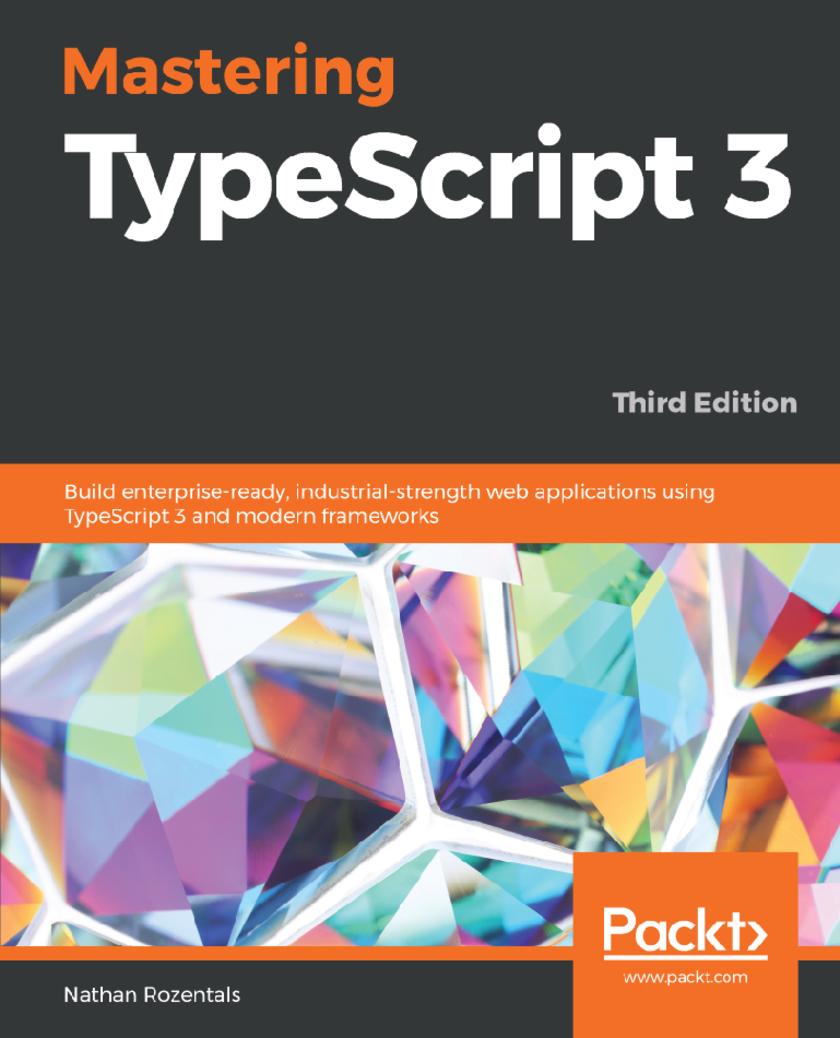
Mastering TypeScript 3
¥90.46
Master the TypeScript language and its latest features. Explore modern application frameworks and utilize industry best practices in TDD, OOP and UI Design. Key Features * Learn the key features of TypeScript 3 and explore advanced language features through in-depth discussions. * Use TypeScript with modern frameworks including Backbone, Angular, Aurelia, React, and Node. * Explore TDD practices, OOP techniques, and industry best practices to create high-quality, modular, and adaptable applications. Book Description TypeScript is both a language and a set of tools to generate JavaScript. It was designed by Anders Hejlsberg at Microsoft to help developers write enterprise-scale JavaScript. Starting with an introduction to the TypeScript language, before moving on to basic concepts, each section builds on previous knowledge in an incremental and easy-to-understand way. Advanced and powerful language features are all covered, including asynchronous programming techniques, decorators, and generics. This book explores many modern JavaScript and TypeScript frameworks side by side in order for the reader to learn their respective strengths and weaknesses. It will also thoroughly explore unit and integration testing for each framework. Best-of-breed applications utilize well-known design patterns in order to be scalable, maintainable, and testable. This book explores some of these object-oriented techniques and patterns, and shows real-world implementations. By the end of the book, you will have built a comprehensive, end-to-end web application to show how TypeScript language features, design patterns, and industry best practices can be brought together in a real-world scenario. What you will learn * Gain insights into core and advanced TypeScript language features * Integrate existing JavaScript libraries and third-party frameworks using declaration files * Target popular JavaScript frameworks, such as Angular, React, and more * Create test suites for your application with Jasmine and Selenium * Organize your application code using modules, AMD loaders, and SystemJS * Explore advanced object-oriented design principles * Compare the various MVC implementations in Aurelia, Angular, React, and more Who this book is for This guide to the TypeScript that starts with basic concepts, and then builds on this knowledge to introduce more advanced language features and frameworks. No prior knowledge of JavaScript is required, although some prior programming experience is assumed. If you are keen to learn TypeScript, this book will give you all of the necessary knowledge and skills to tackle any TypeScript project. If you are already an experienced JavaScript or TypeScript developer, then this book will take your skills to the next level. Learn how to use TypeScript with a multitude of modern frameworks, and choose the best framework for your project requirements. Investigate techniques for Test Driven Development, explore industry-standard design patterns, and learn how to put together a full production-ready TypeScript application.
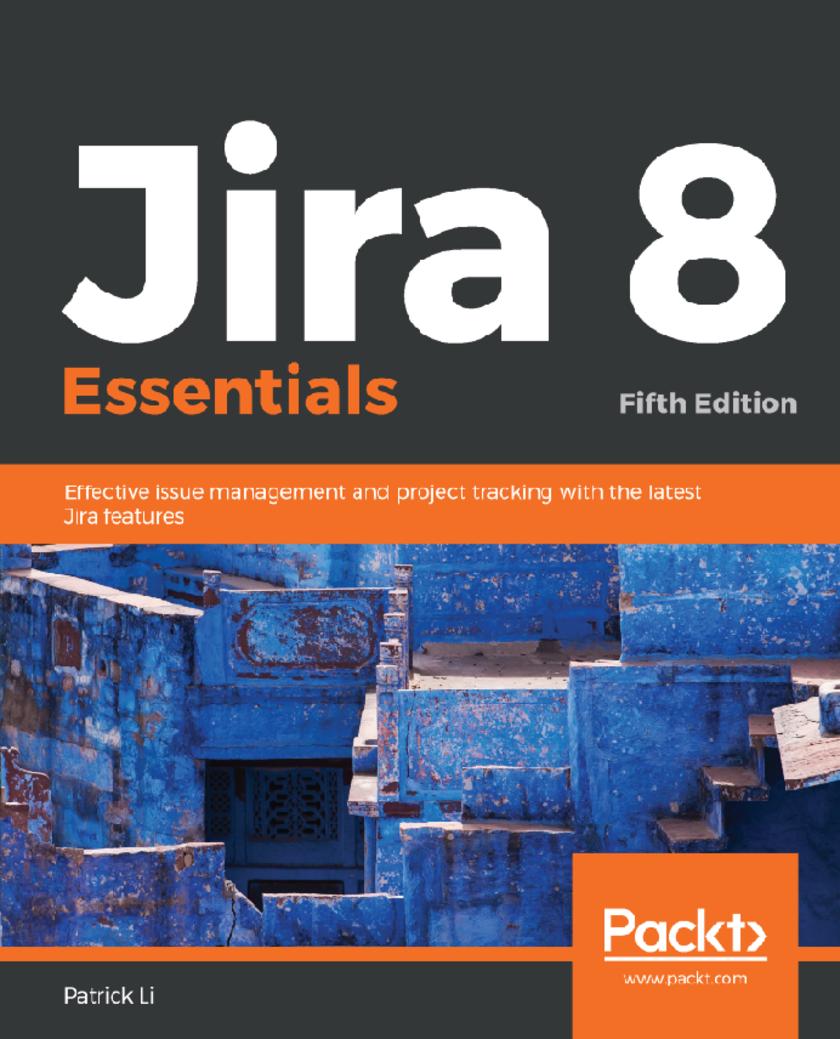
Jira 8 Essentials
¥99.18
Explore the new and improved Jira 8 features such as agile board and advanced search for efficient project management Key Features * Work on agile projects in Jira from both the administrator and end user's perspective * Explore the improved Scrum and Kanban board and backlog * Work through exercises at the end of each chapter to reinforce your skills Book Description Atlassian Jira enables effective bug tracking for your software and mobile applications and provides tools to track and manage tasks for your projects. Jira Essentials is a comprehensive guide, now updated to Jira 8 to include enhanced features such as updates to Scrum and Kanban UI, additional search capabilities, and changes to Jira Service Desk. The book starts by explaining how to plan and set up a new Jira 8 instance from scratch before getting you acquainted with key features such as emails, workflows, business processes, and much more. You'll then understand Jira's data hierarchy and how to design and work with projects. Since Jira is used for issue management, this book delves into the different issues that can arise in your projects. You’ll explore fields, including custom fields, and learn to use them for more effective data collection. You’ll create new screens from scratch and customize them to suit your requirements. The book also covers workflows and business processes, and guides you in setting up incoming and outgoing mail servers. Toward the end, you’ll study Jira's security model and Jira Service Desk, which allows you to run Jira as a support portal. By the end of this Jira book, you will be able to implement Jira 8 in your projects with ease. What you will learn * Understand Jira's data hierarchy and how to design and work with projects in Jira * Use Jira for agile software projects, business process management, customer service support, and more * Understand issues and work with them * Design both system and custom fields to behave differently under different contexts * Create and design your own screens and apply them to different project and issue types * Gain an understanding of the workflow and its various components * Set up both incoming and outgoing mail servers to work with e-mails Who this book is for This book will be especially useful for project managers but it's also intended for other Jira users, including developers, and any other industry besides software development, who would like to leverage Jira's powerful task management and workflow features to better manage their business processes.
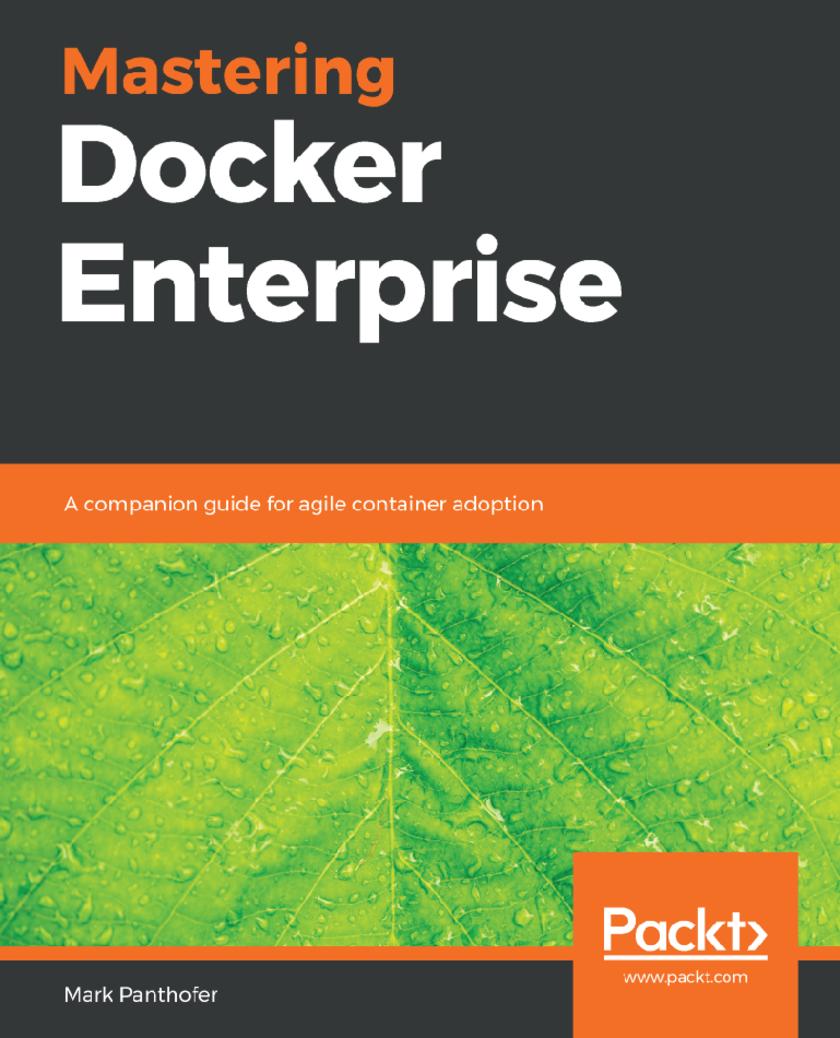
Mastering Docker Enterprise
¥90.46
A journey toward containerized applications in production with a cloud-portable, secure, robust and highly available Docker Enterprise platform. Key Features * Get an insider’s view into the container movement and Docker Enterprise * Manage the transformation associated with enterprise container adoption * Walk through the enterprise container adoption journey Book Description While known mostly as the open source engine behind tens of millions of server nodes, Docker also offers commercially supported enterprise tooling known as the Docker Enterprise. This platform leverages the deep roots from Docker Engine - Community (formerly Docker CE) and Kubernetes, but adds support and tooling to efficiently operate a secure container platform at scale. With hundreds of enterprises on board, best practices and adoption patterns are emerging rapidly. These learning points can be used to inform adopters and help manage the enterprise transformation associated with enterprise container adoption. This book starts by explaining the case for Docker Enterprise, as well as its structure and reference architecture. From there, we progress through the PoC,pilot and production stages as a working model for adoption, evolving the platform’s design and configuration for each stage and using detailed application examples along the way to clarify and demonstrate important concepts.The book concludes with Docker’s impact on other emerging software technologies, such as Blockchain and Serverless computing. By the end of this book, you’ll have a better understanding of what it takes to get your enterprise up and running with Docker Enterprise and beyond. What you will learn * Understand why containers are important to an enterprise * Understand the features and components of Docker Enterprise 2 * Find out about the PoC, pilot, and production adoption phases * Get to know the best practices for installing and operating Docker Enterprise * Understand what is important for a Docker Enterprise in production * Run Kubernetes on Docker Enterprise Who this book is for This book is for Software Architects, DevOps Engineers, Tech Ops, Docker professionals, or any IT professional working with Docker and containers who wants to move containerized workloads to production. This book discusses the enterprise adoption of Docker and Kubernetes,therefore a basic understanding of Docker concepts will be helpful.
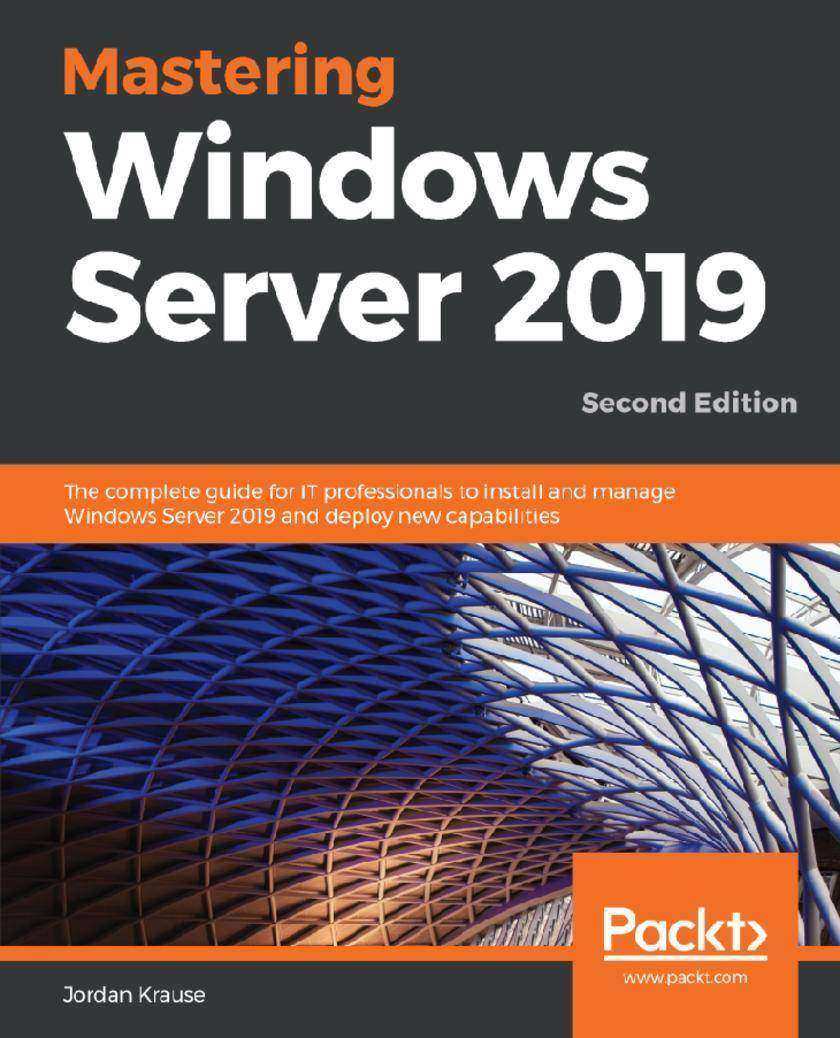
Mastering Windows Server 2019
¥108.99
Enhance and secure your datacenter with the newest Microsoft server platform Key Features * Develop necessary skills to design and implement Microsoft Server 2019 in enterprise environment * Provide support to your medium to large enterprise and leverage your experience in administering Microsoft Server 2019 * Effectively administering Windows server 2019 with the help of practical examples Book Description Mastering Windows Server 2019 – Second Edition covers all of the essential information needed to implement and utilize this latest-and-greatest platform as the core of your data center computing needs. You will begin by installing and managing Windows Server 2019, and by clearing up common points of confusion surrounding the versions and licensing of this new product. Centralized management, monitoring, and configuration of servers is key to an efficient IT department, and you will discover multiple methods for quickly managing all of your servers from a single pane of glass. To this end, you will spend time inside Server Manager, PowerShell, and even the new Windows Admin Center, formerly known as Project Honolulu. Even though this book is focused on Windows Server 2019 LTSC, we will still discuss containers and Nano Server, which are more commonly related to the SAC channel of the server platform, for a well-rounded exposition of all aspects of using Windows Server in your environment. We also discuss the various remote access technologies available in this operating system, as well as guidelines for virtualizing your data center with Hyper-V. By the end of this book, you will have all the ammunition required to start planning for, implementing, and managing Windows. What you will learn * Work with the updated Windows Server 2019 interface, including Server Core and Windows Admin Center * Secure your network and data with new technologies in Windows Server 2019 * Learn about containers and understand the appropriate situations to use Nano Server * Discover new ways to integrate your data center with Microsoft Azure * Harden your Windows Servers to help keep the bad guys out * Virtualize your data center with Hyper-V Who this book is for If you are a System Administrator or an IT professional interested in designing and deploying Windows Server 2019 then this book is for you. Previous experience of Windows Server operating systems and familiarity with networking concepts is required.

Hands-On Dashboard Development with QlikView
¥54.49
A step-by-step approach to building stunning dashboards with QlikView Key Features * Perform effective storytelling through interactive dashboards built with QlikView * Create different types of visualizations from a variety of data sources * Includes tips, tricks, and best practices to perform effective Business Intelligence using QlikView Book Description QlikView is one of the market leaders when it comes to building effective Business Intelligence solutions. This book will show how you can leverage its power to build your own dashboards to tell your own data story. The book starts with showing you how to connect your data to QlikView and create your own QlikView application. You will learn how to add data from multiple sources, create a data model by joining data, and then review it on the front end. You will work with QlikView components such as charts, list boxes, input boxes, and text objects to create stunning visualizations that help give actionable business insights. You will also learn how to perform analysis on your data in QlikView and master the various types of security measures to be taken in QlikView. By the end of this book, you will have all the essential knowledge required for insightful data storytelling and creating useful BI dashboards using QlikView. What you will learn * Learn to use the latest and newest features of QlikView * Connect QlikView to various data sources, such as databases and websites * Create a fully featured data model without circular references * Display your data in maps, charts, and text across multiple sheets * Apply set analysis to your data in QlikView expressions * Secure your data based on the various audience types Who this book is for This book is best suited for BI professionals, data analysts and budding QlikView developers who wish to build effective dashboards using QlikView. Some basic understanding of the data visualization concepts and Business Intelligence is required.
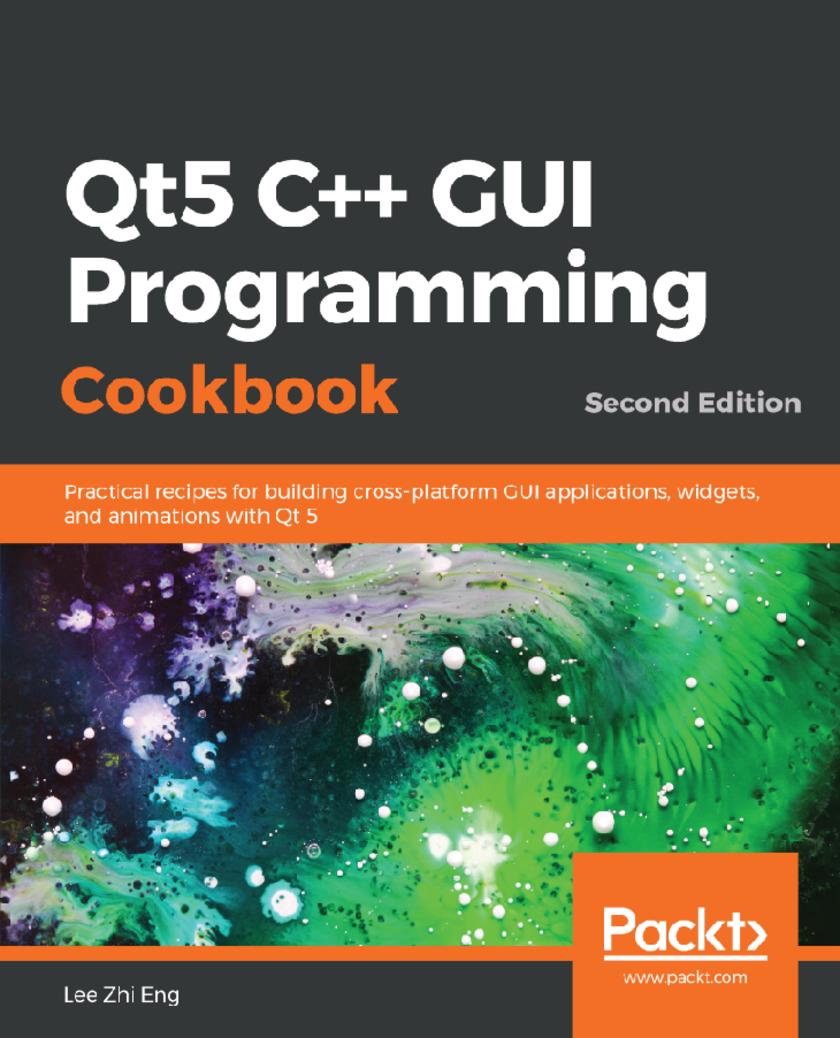
Qt5 C++ GUI Programming Cookbook
¥73.02
Use Qt 5 to design and build functional, appealing, and user-friendly graphical user interfaces (GUIs) for your applications. Key Features * Learn to use Qt 5 to design and customize the look and feel of your application * Improve the visual quality of an application by using graphics rendering and animation * Understand the balance of presentation and web content that will make an application appealing yet functional Book Description With the growing need to develop GUIs for multiple targets and multiple screens, improving the visual quality of your application becomes important so that it stands out from your competitors. With its cross-platform ability and the latest UI paradigms, Qt makes it possible to build intuitive, interactive, and user-friendly user interfaces for your applications. Qt5 C++ GUI Programming Cookbook, Second Edition teaches you how to develop functional and appealing user interfaces using the latest version of QT5 and C++.?This book will help you learn a variety of topics such as GUI customization and animation, graphics rendering, implementing Google Maps, and more. You will also be taken through advanced concepts like asynchronous programming, event handling using signals and slots, network programming, various aspects of optimizing your application. By the end of the book, you will be confident to design and customize GUI applications that meet your clients' expectations and have an understanding of best practice solutions for common problems. What you will learn * Animate GUI elements using Qt5's built-in animation system * Draw shapes and 2D images using Qt5's powerful rendering system * Implement an industry-standard OpenGL library in your project * Build a mobile app that supports touch events and exports it onto devices * Parse and extract data from an XML file and present it on your GUI * Interact with web content by calling JavaScript functions from C++ * Access MySQL and SQLite databases to retrieve data and display it on your GUI Who this book is for This intermediate-level book is designed for those who want to develop software using Qt 5. If you want to improve the visual quality and content presentation of your software application, this book is for you. Prior experience of C++ programming is required.
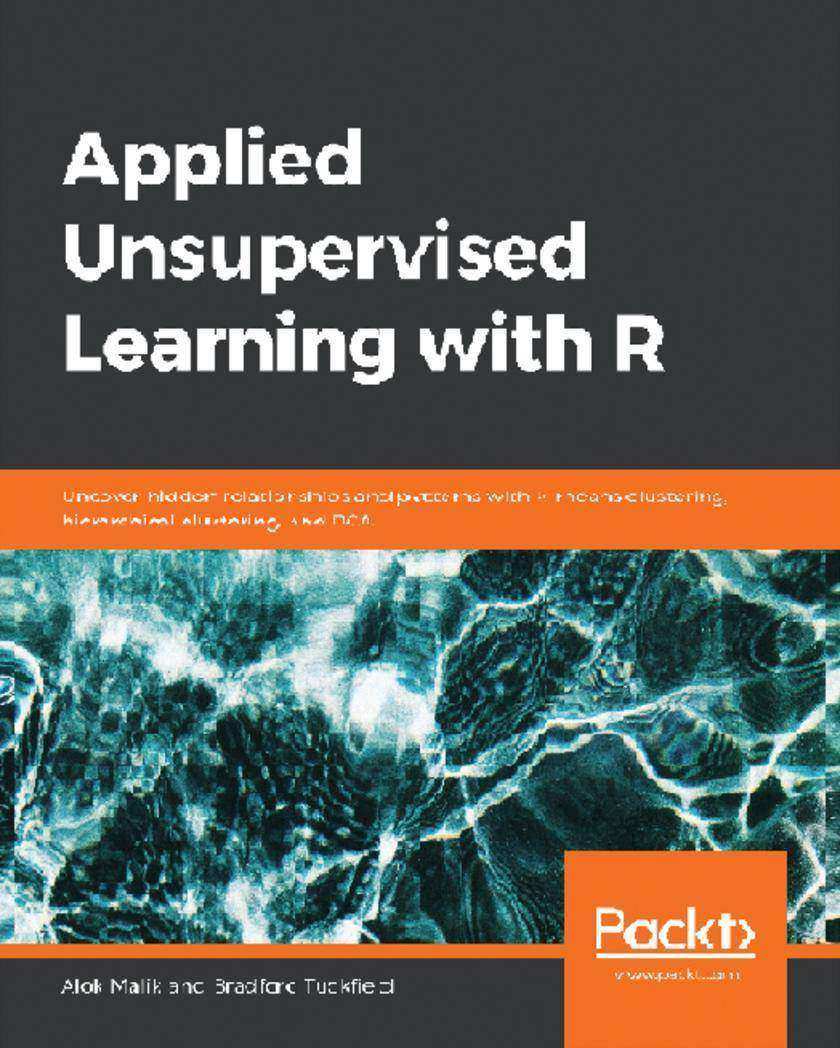
Applied Unsupervised Learning with R
¥63.21
Design clever algorithms that discover hidden patterns and draw responses from unstructured, unlabeled data. Key Features * Build state-of-the-art algorithms that can solve your business' problems * Learn how to find hidden patterns in your data * Revise key concepts with hands-on exercises using real-world datasets Book Description Starting with the basics, Applied Unsupervised Learning with R explains clustering methods, distribution analysis, data encoders, and features of R that enable you to understand your data better and get answers to your most pressing business questions. This book begins with the most important and commonly used method for unsupervised learning - clustering - and explains the three main clustering algorithms - k-means, divisive, and agglomerative. Following this, you'll study market basket analysis, kernel density estimation, principal component analysis, and anomaly detection. You'll be introduced to these methods using code written in R, with further instructions on how to work with, edit, and improve R code. To help you gain a practical understanding, the book also features useful tips on applying these methods to real business problems, including market segmentation and fraud detection. By working through interesting activities, you'll explore data encoders and latent variable models. By the end of this book, you will have a better understanding of different anomaly detection methods, such as outlier detection, Mahalanobis distances, and contextual and collective anomaly detection. What you will learn * Implement clustering methods such as k-means, agglomerative, and divisive * Write code in R to analyze market segmentation and consumer behavior * Estimate distribution and probabilities of different outcomes * Implement dimension reduction using principal component analysis * Apply anomaly detection methods to identify fraud * Design algorithms with R and learn how to edit or improve code Who this book is for Applied Unsupervised Learning with R is designed for business professionals who want to learn about methods to understand their data better, and developers who have an interest in unsupervised learning. Although the book is for beginners, it will be beneficial to have some basic, beginner-level familiarity with R. This includes an understanding of how to open the R console, how to read data, and how to create a loop. To easily understand the concepts of this book, you should also know basic mathematical concepts, including exponents, square roots, means, and medians.
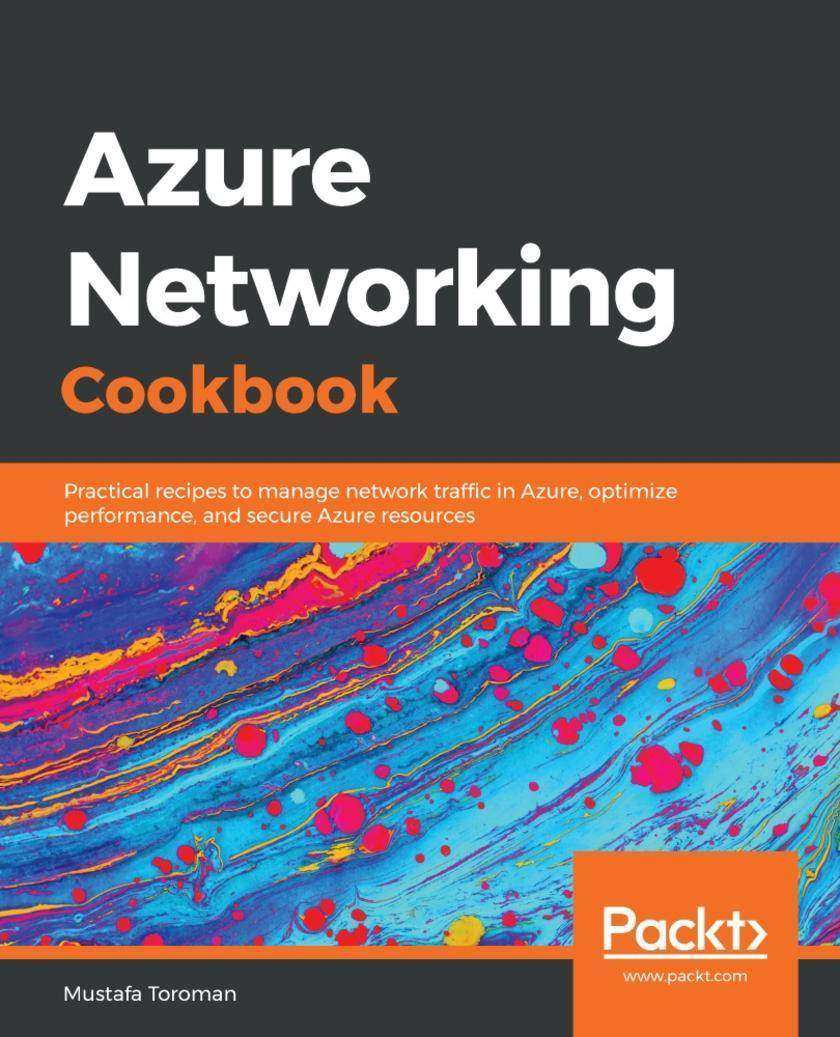
Azure Networking Cookbook
¥63.21
Learn to distribute network traffic, optimize application delivery, and defend network-level threats. Key Features * Quickly get up and running with Azure networking solutions * Level-up your cloud networking skills by planning, implementing, configuring, and securing your infrastructure network with Azure * Leverage Azure networking services to provide applications highly available and fault tolerant environment Book Description Microsoft provides organizations with an effective way of managing their network with Azure's networking services. No matter the size of your organization, Azure provides a way to highly reliable performance and secure connectivity with its networking services. The book starts with an introduction to the Azure networking like creating Azure virtual networks, designing address spaces and subnets. Then you will learn to create and manage network security groups, application security groups, and IP addresses in Azure. Gradually, we move on to various aspects like S2S, P2S, and Vnet2Vnet connections, DNS and routing, load balancers and traffic manager. This book will cover every aspect and function required to deliver practical recipes to help readers learn from basic cloud networking practices to planning, implementing, and securing their infrastructure network with Azure. Readers will not only be able to upscale their current environment but will also learn to monitor, diagnose, and ensure secure connectivity. After learning to deliver a robust environment readers will also gain meaningful insights from recipes on best practices. By the end of this book, readers will gain hands-on experience in providing cost-effective solutions that benefit organizations. What you will learn * Learn to create Azure networking services * Understand how to create and work on hybrid connections * Configure and manage Azure network services * Learn ways to design high availability network solutions in Azure * Discover how to monitor and troubleshoot Azure network resources * Learn different methods of connecting local networks to Azure virtual networks Who this book is for This book is targeted towards cloud architects, cloud solution providers, or any stakeholders dealing with networking on the Azure cloud. Some prior understanding of Microsoft Azure will be a plus point.
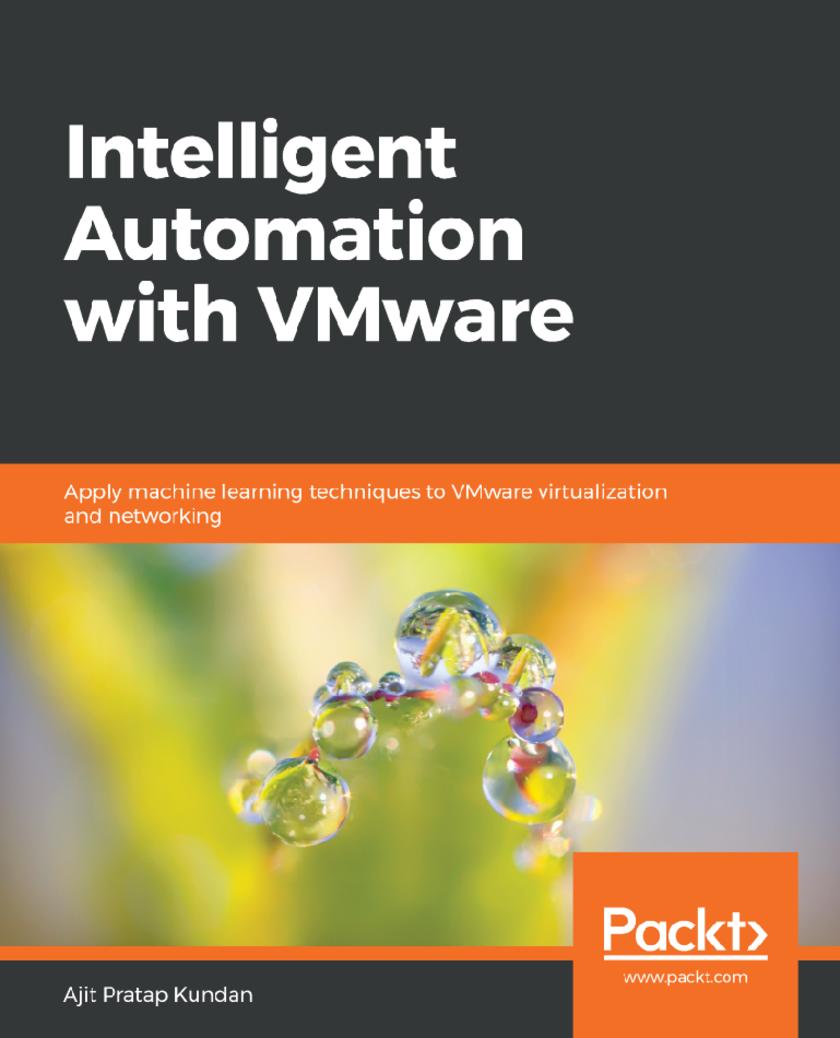
Intelligent Automation with VMware
¥73.02
Use self-driven data centers to reduce management complexity by deploying Infrastructure as Code to gain value from investments. Key Features * Add smart capabilities in VMware Workspace ONE to deliver customer insights and improve overall security * Optimize your HPC and big data infrastructure with the help of machine learning * Automate your VMware data center operations with machine learning Book Description This book presents an introductory perspective on how machine learning plays an important role in a VMware environment. It offers a basic understanding of how to leverage machine learning primitives, along with a deeper look into integration with the VMware tools used for automation today. This book begins by highlighting how VMware addresses business issues related to its workforce, customers, and partners with emerging technologies such as machine learning to create new, intelligence-driven, end user experiences. You will learn how to apply machine learning techniques incorporated in VMware solutions for data center operations. You will go through management toolsets with a focus on machine learning techniques. At the end of the book, you will learn how the new vSphere Scale-Out edition can be used to ensure that HPC, big data performance, and other requirements can be met (either through development or by fine-tuning guidelines) with mainstream products. What you will learn * Orchestrate on-demand deployments based on defined policies * Automate away common problems and make life easier by reducing errors * Deliver services to end users rather than to virtual machines * Reduce rework in a multi-layered scalable manner in any cloud * Explore the centralized life cycle management of hybrid clouds * Use common code so you can run it across any cloud Who this book is for This book is intended for those planning, designing, and implementing the virtualization/cloud components of the Software-Defined Data Center foundational infrastructure. It helps users to put intelligence in their automation tasks to get self driving data center. It is assumed that the reader has knowledge of, and some familiarity with, virtualization concepts and related topics, including storage, security, and networking.
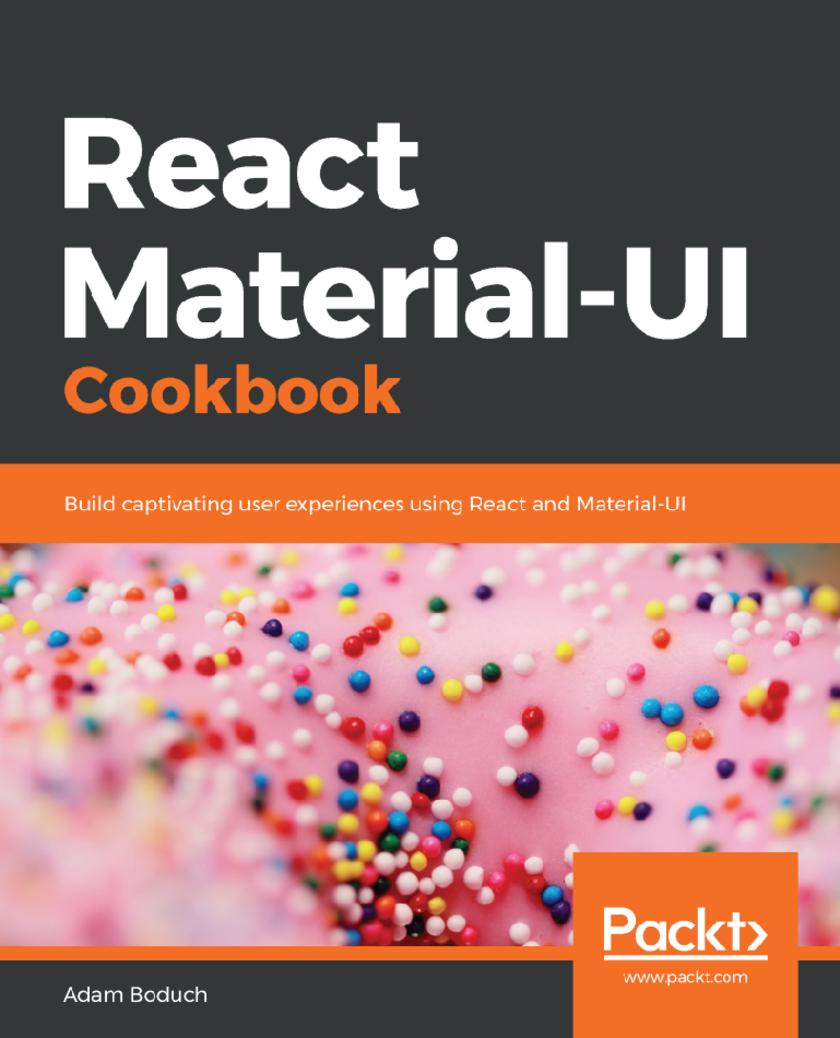
React Material-UI Cookbook
¥73.02
Build modern day application by implementing Material Design principles in React applications using Material-UI. Key Features * Grasp the needs React components for UI elements * Master the style and theme of the tools to go along with these components * Get to grips with all the React best practices to build a modern application Book Description Material-UI is a component library for rendering UI elements, using modern best practices from React and Material Design. This book will show you how you can create impressive and captivating modern day web apps by implementing Material Design considerations. The primary objective of this book is to help you use several Material-UI components to build larger UI functionality. We will also focus on React best practices in conjunction with Material-UI components – using state, context, and other new React 16.8 features properly. This book will start with layout and navigation and then dive into presenting the information with Material-UI components. It will then talk about the different components for user interactions. By the end of this book, you will know how to improve the look and feel of your applications using Material-UI components. What you will learn * Learn to build the overall structure and navigation for your Material-UI app * Learn to present simple and complex information in a variety of ways * Build interactive and intuitive controls * Design portable themes and styles for all of your Material-UI apps * Group content into sections using tabs and expansion panels * Learn how to design a general page layout with Material-UI grids * Use lists for complex data, and cards for detailed information Who this book is for They are JavaScript developers who have some basic knowledge of React and would want to implement Material Design principles in React applications using Material-UI. The reader wants to build a user interface using React components but doesn’t want to invent their own style or UX framework.
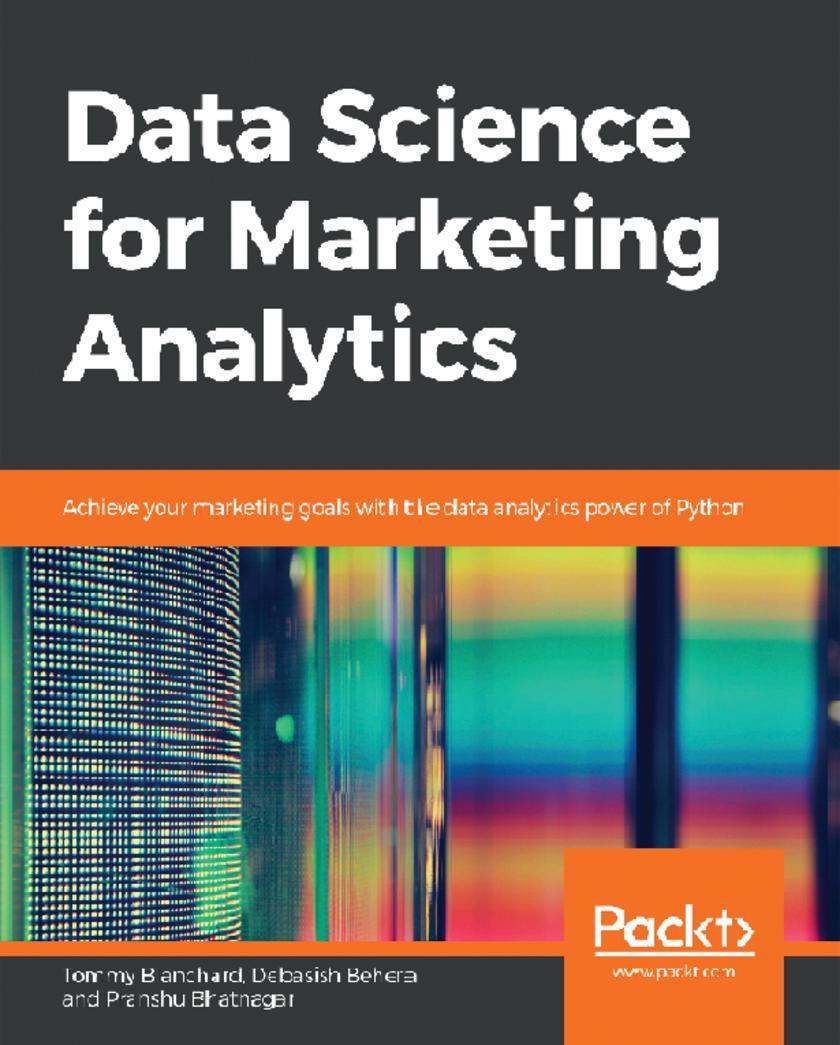
Data Science for Marketing Analytics
¥73.02
Explore new and more sophisticated tools that reduce your marketing analytics efforts and give you precise results Key Features * Study new techniques for marketing analytics * Explore uses of machine learning to power your marketing analyses * Work through each stage of data analytics with the help of multiple examples and exercises Book Description Data Science for Marketing Analytics covers every stage of data analytics, from working with a raw dataset to segmenting a population and modeling different parts of the population based on the segments. The book starts by teaching you how to use Python libraries, such as pandas and Matplotlib, to read data from Python, manipulate it, and create plots, using both categorical and continuous variables. Then, you'll learn how to segment a population into groups and use different clustering techniques to evaluate customer segmentation. As you make your way through the chapters, you'll explore ways to evaluate and select the best segmentation approach, and go on to create a linear regression model on customer value data to predict lifetime value. In the concluding chapters, you'll gain an understanding of regression techniques and tools for evaluating regression models, and explore ways to predict customer choice using classification algorithms. Finally, you'll apply these techniques to create a churn model for modeling customer product choices. By the end of this book, you will be able to build your own marketing reporting and interactive dashboard solutions. What you will learn * Analyze and visualize data in Python using pandas and Matplotlib * Study clustering techniques, such as hierarchical and k-means clustering * Create customer segments based on manipulated data * Predict customer lifetime value using linear regression * Use classification algorithms to understand customer choice * Optimize classification algorithms to extract maximal information Who this book is for Data Science for Marketing Analytics is designed for developers and marketing analysts looking to use new, more sophisticated tools in their marketing analytics efforts. It'll help if you have prior experience of coding in Python and knowledge of high school level mathematics. Some experience with databases, Excel, statistics, or Tableau is useful but not necessary.




 购物车
购物车 个人中心
个人中心



